Frontline report: Belarusian corps burn Russian hideouts with fire shells

Today, the biggest news comes from the Kupiansk direction, Kharkiv Oblast.
Here, Belarusian volunteers fighting for Ukraine are hammering Russian positions and dismantling their staging grounds. Ideologically opposed to Russia’s invasion and morality, they are taking expert advantage of weak spots that appeared after Russian generals recently grossly misallocated their resources.
At Kupiansk, Ukrainians continue to hold the line with commandos of the Ukrainian intelligence directorate forming a formidable part of the defense, and standing beside them, integrated into the unit, is the Belarusian Volunteer Corps.
While there are many groups of Belarusian volunteers, this unit is integrated into and has received special forces-level training from Ukraine. They do not operate alone, instead acting as support elements for deep special forces raids, sabotage, and reconnaissance missions, as well as a number of teams conducting these operations themselves.
For one of these missions, Belarusians in the mortar unit of the volunteer corps modified and specialized their rounds for a specific purpose. Combining a napalm-like substance with thermite flakes, these incendiary shells were meant to burn away forest cover, force Russians out of their dugouts into the open, and create a massive, long-lasting distraction.
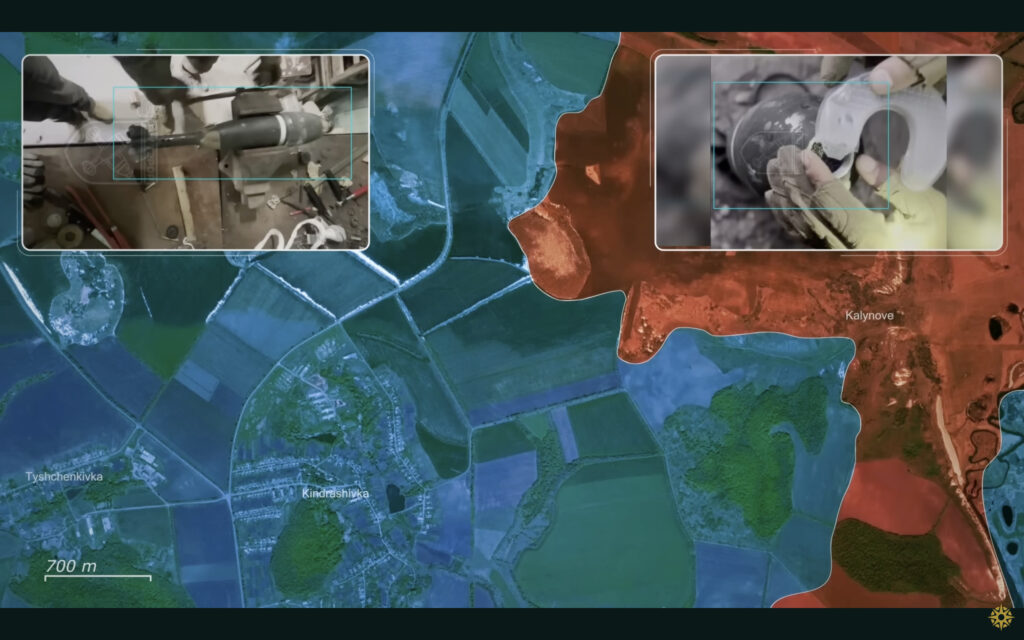
Geolocated footage shows these rounds landing in streaks on a small forest near the settlement of Kindrashivka, the napalm-like substance holding the incendiary thermite flakes together burning at over 2,000 degrees Celsius or 3,600 Fahrenheit.
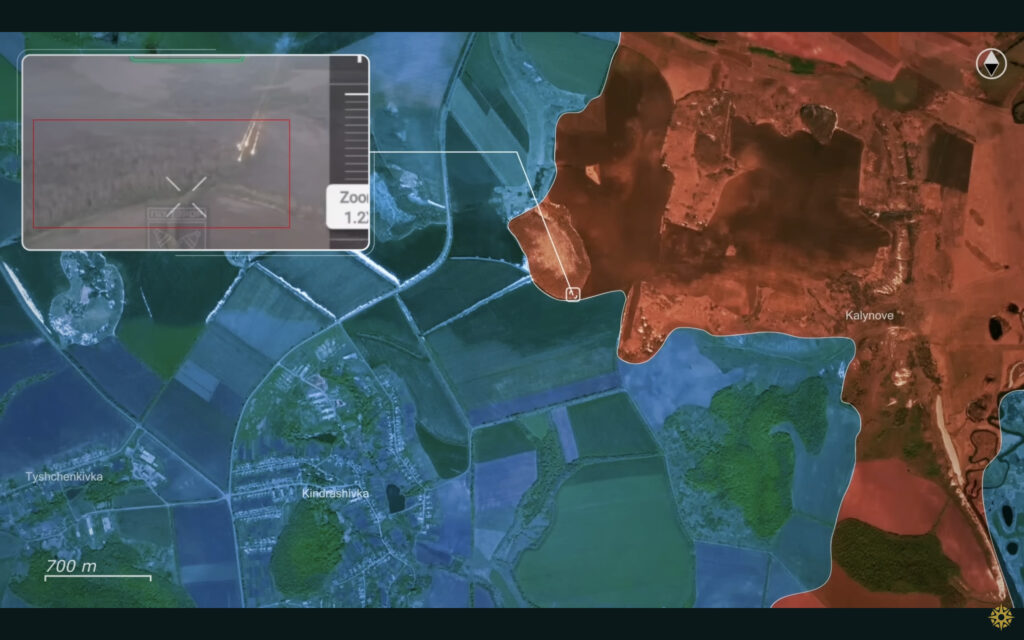
The mission was to hold an active defense in front of Kindrashivka, as Russian infiltrators have regularly tried to establish a foothold here. The forest is linked to the settlement by a narrow series of tree lines through which Russian infantry move under the cover of darkness, after gathering first in the forest.
However, the fires raining down on them distracted the Russians and flushed them out of their hideouts. Reportedly, they were then engaged from behind by a special forces raiding party that cleared the forest of Russian soldiers.
The Belarusian operation here was a direct result of problems caused by Russian commanders themselves. Recently, amidst stalling progress at Kupiansk and eager to report success, another classical flag planting operation was launched; however, this one made the mistake of reporting successes far beyond what was believable.
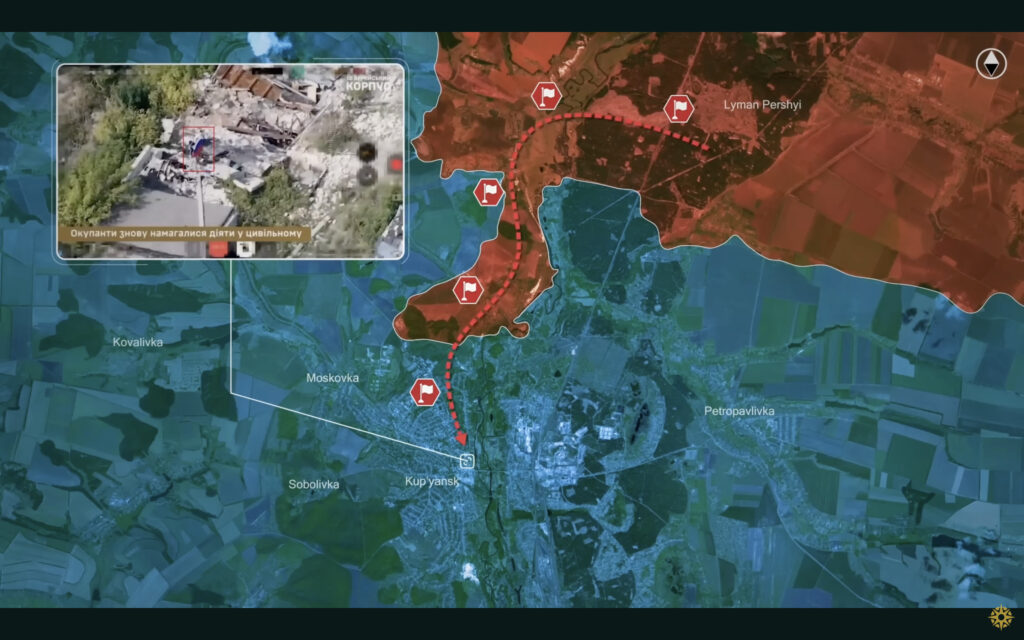
Russian soldiers were forced to move into Kupiansk in civilian clothing to prevent Ukrainian interdiction, before unfurling flags all the way in the center of the town. Proudly satisfied they could publish footage proving the Russian capture of half of the town in a single day, Russians shared the footage across social media, which was then promptly tracked and geolocated by the Ukrainian 10th Army Corps.
Discovering every single one of these infiltration groups, the Russian pretenders were quickly dispatched by FPV drone strikes and elite forces going door to door. The Russian tricolors were taken as trophies, while Russian military analysts were forced to admit that commanders had sent in these soldiers to die for an information victory that only lasted a couple of hours.
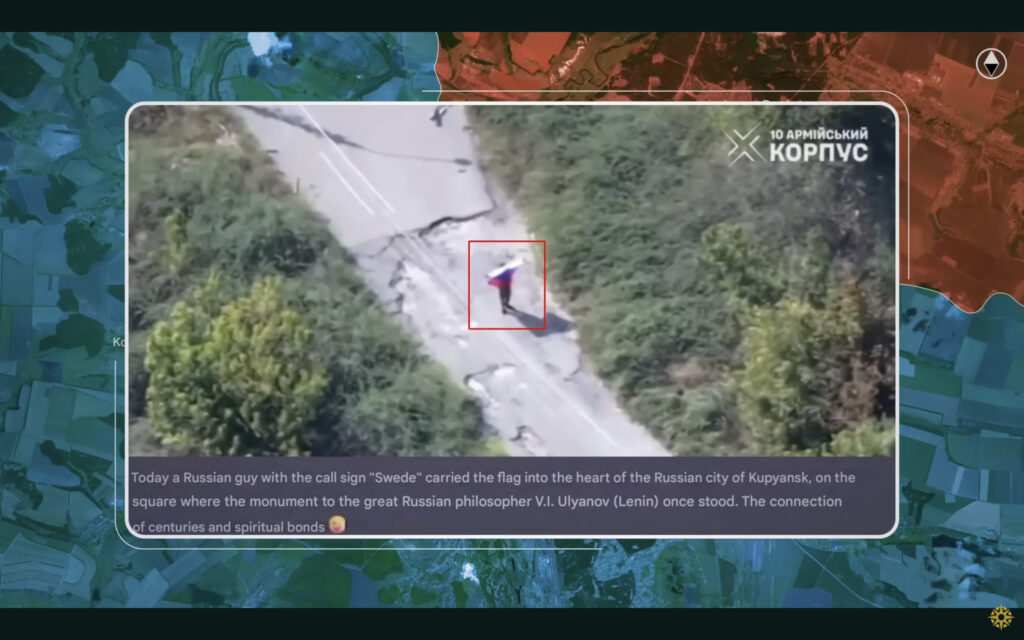
While not only a suicide mission for the Russian soldiers involved, the operation was a gross misallocation of Russian resources across the Oskil River. The wasteful throwing away of dozens of soldiers’ lives left Russian soldiers fighting the actual battle without reinforcements; a situation lasting several days due to the difficulty of fording troops across the heavily monitored river.
The Belarusian operation of destroying a Russian staging ground was only a part of the Ukrainian response, as combined Ukrainian forces across the entire Russian bridgehead took advantage of the Russian miscalculation.
Notably, Russian commanders tried to salvage the situation with yet another flag planting operation, this time sticking the Russian flag to the Kupiansk Television mast with drones and a magnet, enraging Russian military observers who, in response, called for the complete purging of the command and leadership of the Russian Sixth Army.
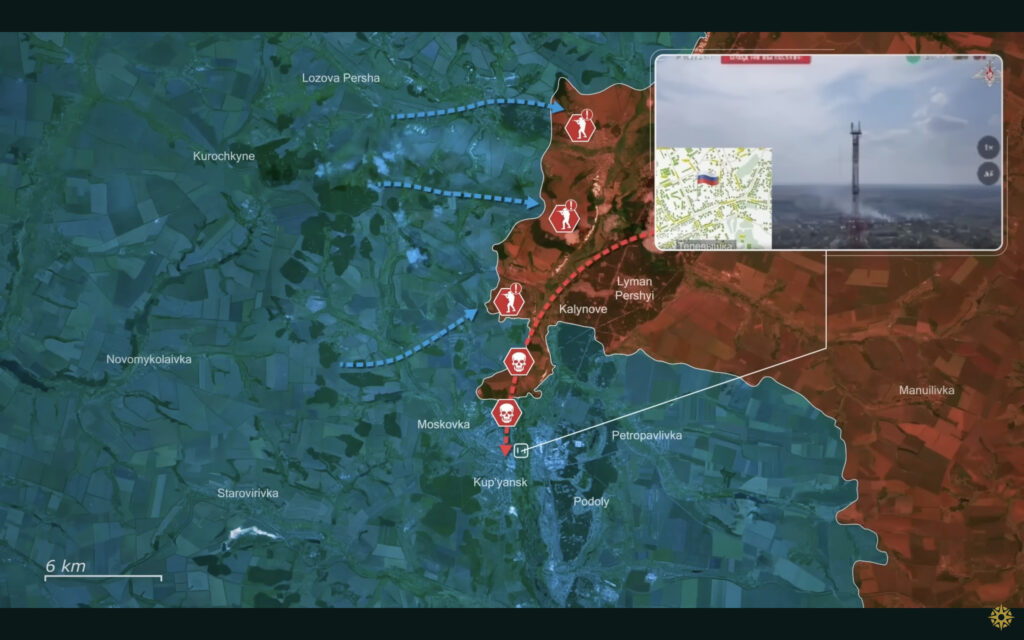
Overall, Russian commanders made a gross mistake, leading to the deaths of dozens of their fighters, leaving Russians fighting the actual battle for Kupiansk understaffed and without reinforcements. Taking advantage, Ukrainians cleared out Russian staging grounds, as Belarusian volunteers showed highly adaptive skills, creating explosives tailored specifically for the mission at hand.
As the Belarusian force trained in the ways of Ukrainian special forces numbers approximately 300 soldiers in the Kupiansk direction alone, these motivated fighters are demonstrating their commitment to the cause and indomitable will to fight against what they consider to be the Russian menace.
In our regular frontline report, we pair up with the military blogger Reporting from Ukraine to keep you informed about what is happening on the battlefield in the Russo-Ukrainian war.